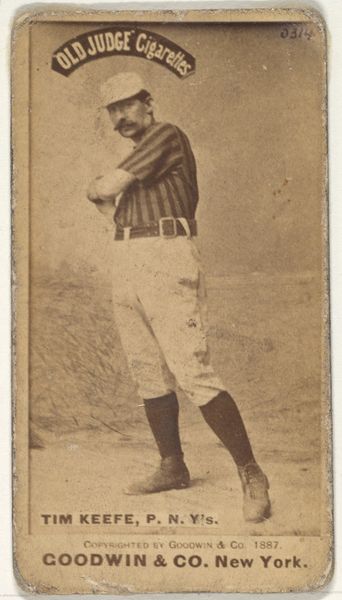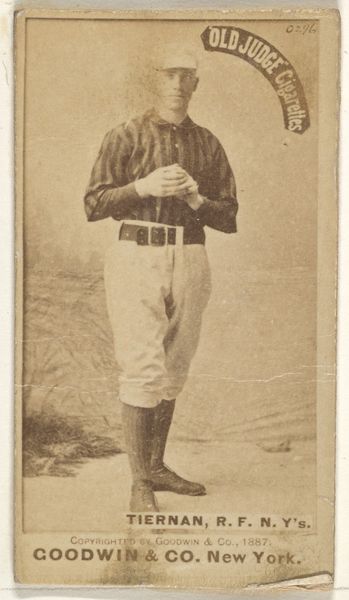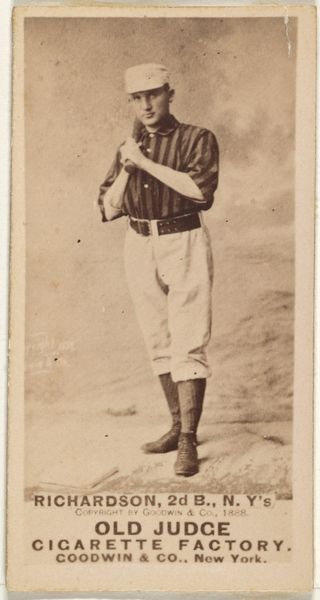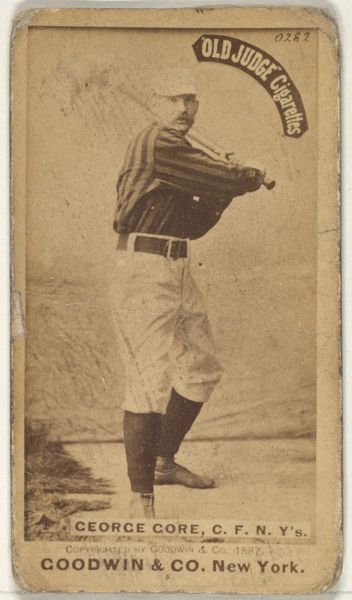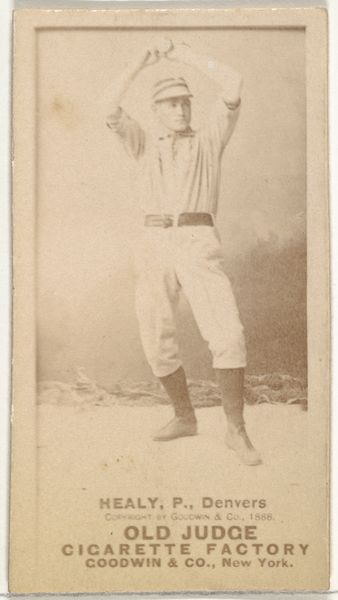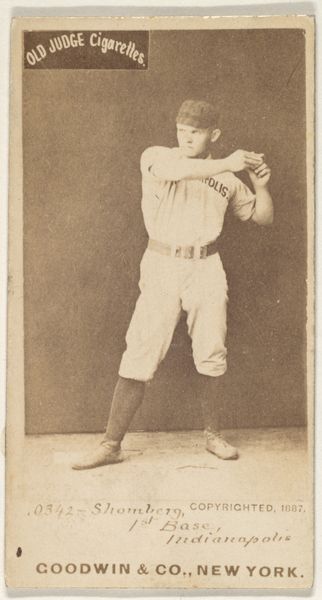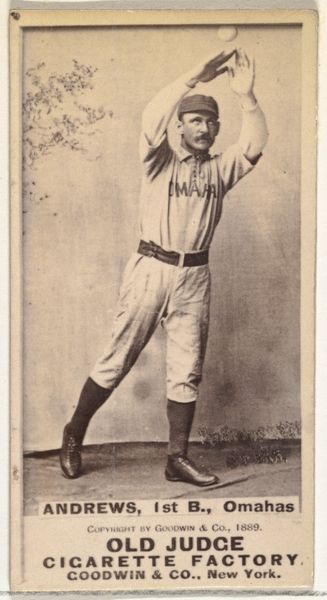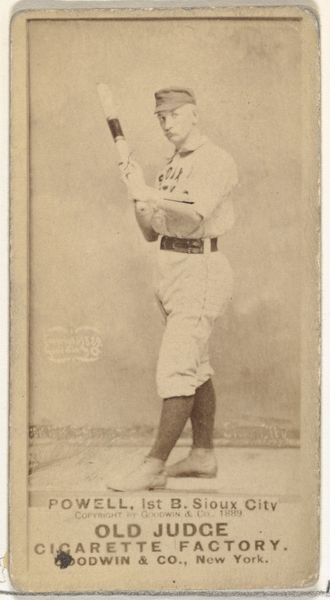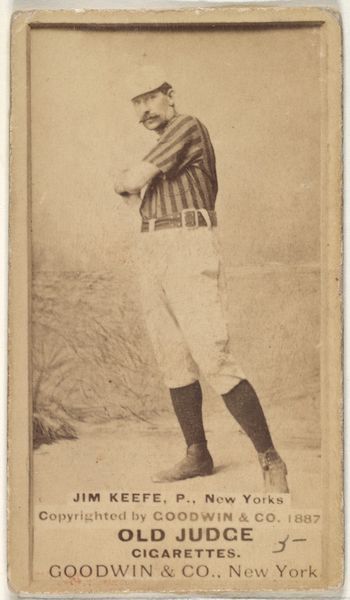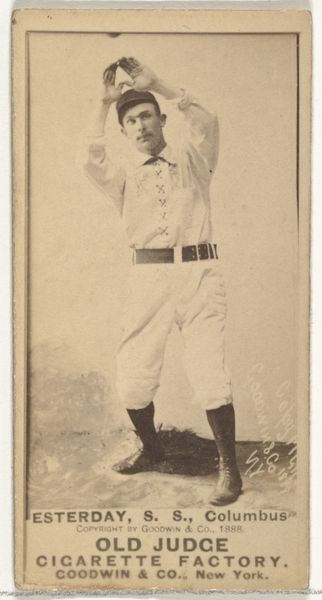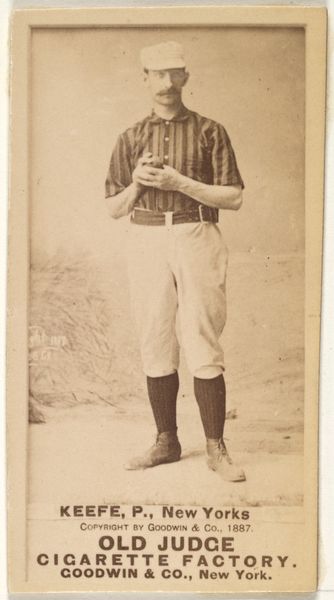
Michael "Mike" Joseph Mattimore, Pitcher, New York, from the Old Judge series (N172) for Old Judge Cigarettes 1887
0:00
0:00
drawing, lithograph, print, photography
#
portrait
#
drawing
#
lithograph
# print
#
impressionism
#
baseball
#
photography
#
coloured pencil
#
men
#
athlete
Dimensions: sheet: 2 11/16 x 1 3/8 in. (6.9 x 3.5 cm)
Copyright: Public Domain
Curator: This is a lithograph portrait of Michael "Mike" Joseph Mattimore, a pitcher for New York, created around 1887 by Goodwin & Company as part of the Old Judge Cigarettes series. It’s currently held at the Metropolitan Museum of Art. Editor: It's captivating. There’s a sort of fragile heroism conveyed. I see a lone figure, ready, bathed in a warm sepia tone; he appears to have the weight of his entire team and city resting on those poised hands. The gaze is very intense. Curator: Yes, the image operates on a lot of cultural expectations and projections of what a sportsman means. Look at the period. It's right on the cusp of the Gilded Age, where anxieties about labor and industrialization were widespread. This image is an attempt at establishing a kind of working class hero that exists beyond those systems. What does baseball as a symbol represent at this time? And why is the image circulated with consumerist objects like cigarettes? Editor: I see an association with rituals of virility and what's deemed masculine in that moment. Baseball represents physical prowess, competition, while the cigarettes evoke a particular era's idea of sophisticated masculinity and these items intertwine in that pursuit of constructing identity. Notice how "Old Judge" becomes the archetype. It represents some authority or ideal the man aspires to be, creating almost a patron-client relationship. Curator: Absolutely. Mattimore as a commodity himself, tied into branding. His body, his skill, his perceived values are being marketed alongside cigarettes. It makes you consider who had access to these images, and what hierarchies it creates. The white male athlete, specifically, placed in the spotlight. Editor: I keep returning to that arching "Old Judge Cigarettes" inscription across the top. It acts as a halo of sorts, sacralizing the brand, but also sacralizing Mattimore as the standard of manhood to be followed. There’s an undeniable visual hierarchy here, turning consumerism into worship, or at least emulation. Curator: It shows how mass media helped in producing celebrity and promoting specific ideals in the late 19th century. The portrait serves less as an actual depiction and more as a symbol within the frame of social power dynamics. It helps contextualize a broader scope of inequalities, especially in sports history. Editor: This examination makes you realize these portraits do more than merely document. They become powerful conduits for cultural ideals and aspirations that persist to this day, for better and for worse. The use of photography reproduced into cards created accessibility while shaping identity.
Comments
No comments
Be the first to comment and join the conversation on the ultimate creative platform.
